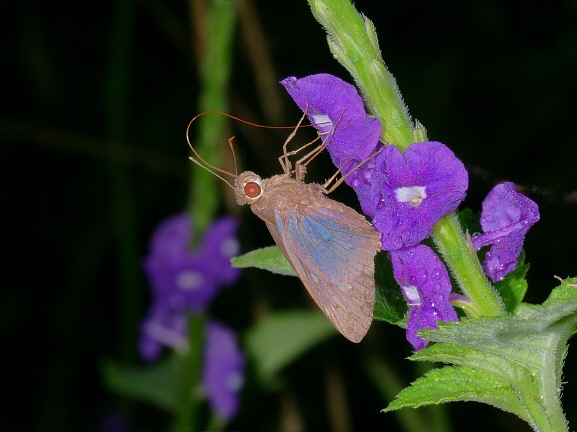
Introduction
The genus Moeros comprises of a single species which is found from Surinam and Trinidad south to Peru and Bolivia. The specimen illustrated is faded and worn – fresh adults have a dark chocolate ground colour, with a deep turquoise-blue lustre on the underside.
The deep ruby red eyes are a feature found in several other genera including – Perichares, Synale, Carystoides, Dion, Lycas, Orphe, Orses, Carystus, Talides, Telles, Tellona, Tisias and Tromba. Most of these genera are crepuscular in behaviour. The redness of the eyes is due to an unusual eye structure that increases the effectiveness of vision in poor light.
Note : Moeros is an entirely different genus to the confusingly named Moeris. The latter are also grass-feeding ( Hesperiine ) skippers, but are smaller, darker and do not have ruby eyes.
Habitats
This species was photographed at an altitude of about 550m in disturbed primary rainforest on the Rio Alto Madre de Dios, Peru. It probably occurs at altitudes between sea level and about 1000m.
Lifecycle
Unknown, but the larvae almost certainly feed on grasses ( Poaceae ).
Adult behaviour
At dawn the butterflies can be seen in glades, gardens and along riverbanks in disturbed forest habitats, darting rapidly from flower to flower, probing deep into the calyx of each, and often returning to the same flower several times. They are not usually seen again until just before dusk, when males feed at bird droppings on leaves or on the forest floor.
